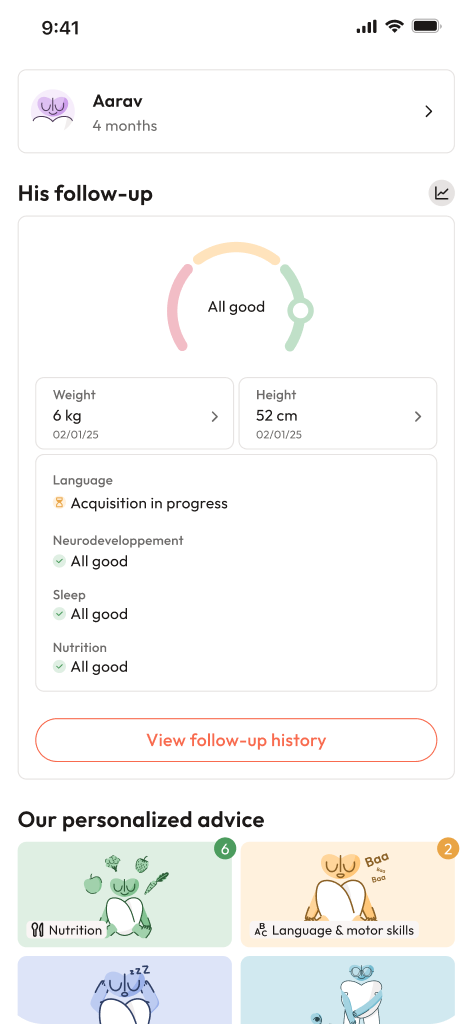Oxytocin childbirth—a phrase that sometimes evokes curiosity, reassurance, or even a flurry of questions among parents awaiting their baby’s grand entrance. You might imagine a “love hormone”, a drip attached to the IV stand, or an accelerated birth plan that’s supposed to nudge things along. How exactly does this blend of science and nature shape your labour, comfort, and baby’s first moments? Should you expect a seamless, streamlined process, or can oxytocin childbirth transform labour into a more intense, clinical occurrence? These questions linger in the minds of many parents, often mingled with anticipation, anxiety, and a strong desire for clarity. Here, every heartbeat and contraction is an important signal, every intervention a moment of reckoning. Let’s delve into how oxytocin childbirth is orchestrated, its science, how teams aim to make it a safe journey, and the nuances that matter when making choices alongside your care providers.
Understanding Oxytocin Childbirth: Natural and Medical Perspectives
Natural Oxytocin vs Synthetic—Pitocin, Syntocinon, and More
Inside the human body, oxytocin hormone is released in pulses by the brain’s hypothalamus and travels through the bloodstream, acting as the body’s conductor for uterine contractions. This cyclic dance—gentle at first, then increasingly coordinated—ushers in the birth of a baby. When medical teams think labour needs a boost or must be started, synthetic oxytocin induction (well-known as Pitocin or Syntocinon) enters the scene. Delivered as a carefully calculated IV drip, it targets the same uterine receptors, allowing precise adjustment of contraction intensity, pattern, and duration—elements critical when nature’s melody is out of tune.
But why does this matter for parents? The difference between organic and synthetic is both subtle and significant. Natural oxytocin comes in surges—triggered by emotions, touch, environment—sometimes blunted by stress. With an infusion, the rhythm is set by a pump, often lending labour a steadier, sometimes more intense tempo. Some mothers find the progression comforting and controlled; others sense a sharper shift, with continuous monitoring and frequent dose checks colouring the experience.
The Science: How Does Oxytocin Childbirth Truly Work?
Oxytocin childbirth is built on a foundation of cellular choreography. Oxytocin attaches to receptors on uterine muscle cells, activating a calcium-driven contraction process. This wave of coordination—supported by prostaglandin receptors and gap junctions—produces the rhythmic tightening felt as contractions. As labour advances and the due date nears, these receptors multiply, making the uterus more responsive. Prior births, the presence of an epidural, and gestational age—all influence how much oxytocin is needed and its eventual impact.
A fascinating twist: oxytocin’s lifecycle is brisk—fast to appear, fast to disappear. This metabolic agility is a safety net. Should contractions become too frequent or cause discomfort, the effect drops rapidly when the drip is paused, unlike other medications that may linger.
Emotional Impact—Bonding, Calm, and “Labour Bubble”
Oxytocin acts not just on the body but within the mind. During oxytocin childbirth, mothers often describe a focused “in-the-zone” state—a sense of being wrapped in the moment. The hormone blunts stress pathways, fostering calmness and trust, and encouraging connection. Early skin-to-skin and breastfeeding dramatically intensify these effects, helping both uterus and emotions recover synchronously.
When, Why, and How Is Oxytocin Used during Labour?
Induction—Starting Labour with Intention
Sometimes, the natural wait becomes risky or overstays its welcome—past-due pregnancy, rising blood pressure, diabetes, concerns for fetal well-being, or ruptured membranes all tip the scale towards medical induction with oxytocin childbirth. A key checkpoint here is the Bishop score—a tool assessing the cervix’s readiness (dilation, position, softness, baby’s station). If the cervix is “unripe”, mechanical or pharmacologic “ripening” like a Foley balloon or prostaglandin gel prepares the scene before oxytocin sets contractions in motion.
Augmentation—When Progress Stalls
Labour has started, but the tempo falters. Oxytocin augmentation is introduced to strengthen insufficient contractions or restart a slow dance of dilation. Here, careful titration is paramount—balancing between effective progress and the risk of tachysystole (contractions too close together, which can stress the baby).
After Birth—Reducing Bleeding, Supporting Recovery
Oxytocin childbirth doesn’t end with delivery. It’s used immediately after birth—by injection or drip—to prompt firm uterine contractions that reduce postpartum bleeding (postpartum hemorrhage, or PPH). The practice of “active management” here—combining oxytocin, gentle traction on the umbilical cord, and uterine massage—has become a cornerstone in many maternity units.
Practical Steps: Preparing for Oxytocin Childbirth
Assessing Readiness: Cervical Status and Ripening
What’s the first step before an oxytocin induction? A digital examination informs the Bishop score. With a low score, gentle preparation with a Foley catheter or low-dose prostaglandins can increase the chance of a smooth, vaginal delivery. Each method comes with its rhythm—mechanical devices are often the first pick when rapid-onset contractions pose extra risk.
IV Protocols, Dosing, and Monitoring
Oxytocin is introduced via a dedicated IV line and handled with an electronic pump. The protocol may be “low dose” (gradual increase, close checks), or “high dose” (faster titration, higher vigilance for side effects). The usual aim: three to five contractions every ten minutes, each lasting about a minute, with the cervix opening steadily.
Continuous monitoring is not just routine—it’s an essential safeguard. Both fetal heart rate and contraction pattern are observed—sometimes with portable or wireless monitors allowing comfort measures such as a birthing ball, position changes, or even a warm shower. Ask your team about their pain-relief approach—epidurals, breathing exercises, and emotional support can all still play a part.
Deciding When to Pause or Stop
Oxytocin is paused or weaned back if contractions become too frequent, the baby’s heart traces show concern, or maternal symptoms like persistent pain or headache arise. These moments require calm, collaborative assessment—sometimes the drip resumes later at a safer pace, sometimes alternative delivery methods come into play.
Benefits and Risks: Science, Safety, and Successful Outcomes
Why Oxytocin Childbirth is Used
- Reliable kick-starting or boosting of contractions when the body needs extra help
- Shortening prolonged labour, thus reducing maternal tiredness and lessening risks such as infection
- Key role in reducing heavy bleeding after delivery
- May lower caesarean rates when the cervix is favourable, but impacts are highly individual
What Are the Risks?
- Tachysystole: Too-frequent contractions, which may reduce the baby’s oxygen supply; easily managed by reducing the drip
- Very rare: Uterine rupture, especially if the womb has a previous scar (from earlier caesarean)
- Blood pressure drops, nausea, headache—generally manageable but monitored closely
- Water intoxication or hyponatremia if large amounts of diluted fluid are given over many hours—a rare but avoidable scenario through proper fluid control
- For the baby: most will tolerate oxytocin childbirth well when monitored, but signs of distress (like changes in heart rate) are picked up quickly
Nuances, Special Cases, and Parental Empowerment
Special Scenarios
- VBAC/TOLAC: Oxytocin childbirth after a caesarean is possible, with extra monitoring for uterine scar integrity
- Multiple Gestation, IUGR, Oligohydramnios: Require closer, continuous monitoring since babies can respond differently
- Preterm Labours and Maternal Health Issues: Lower and more carefully titrated doses, strict observation, and early paediatric involvement if needed
Postpartum: Oxytocin for Bleeding Prevention
Immediate postpartum oxytocin, typically ten units by injection or short IV, helps the uterus contract firmly, greatly reducing the risk of heavy bleeding. Where bleeding persists, doctors may use second-line medications (ergometrine, misoprostol, or tranexamic acid) after careful consideration.
Human Experience: Comfort, Pain, and Parental Preferences
Contraction Patterns, Pain, and Relief
Oxytocin childbirth often leads to a more intense contraction pattern, which can translate to increased pain—and sometimes an earlier request for analgesia like an epidural. Even so, many non-pharmacological comforts—movement, birthing balls, massage, music—remain available. Discussing expectations, pain management strategies, and preferences for mobility helps align the plan with your goals.
Combining with Other Methods
Oxytocin may be paired with prostaglandin ripening or mechanical methods for a tailored approach, all decided in accordance with cervical status, prior births, and fetal well-being. “Natural” methods—gentle nipple stimulation or a calm, dimly lit room—can help trigger natural oxytocin alongside medical support.
Shared Decision-Making—Your Birth Plan, Your Voice
Before oxytocin childbirth, clarify with your team: why now, what are the goals, when will progress be checked, and what are the “stop points”? Have open conversations about pain relief, monitoring, and comfort. Ensure your choices, boundaries, and priorities are documented and respected throughout the process.
Key Takeaways
- Oxytocin childbirth, whether for induction, augmentation, or postpartum management, is a cornerstone of modern perinatal care, blending biology and medical technology.
- Natural and synthetic oxytocin behave similarly at the uterine level, but the delivery method alters sensations and the degree of monitoring needed.
- The success and safety of oxytocin childbirth depend on good preparation (like cervical ripening), correct dosing, and vigilant, continuous monitoring.
- Main risks—tachysystole, rare fluid imbalances, and rare uterine rupture—are reduced by protocols emphasizing the lowest effective dose for the shortest necessary time.
- Special situations, like prior caesareans or multiple pregnancies, call for individualized planning.
- Immediate postpartum oxytocin is integral to bleeding prevention, supporting a healthy and confident start to parenthood.
- Never hesitate to raise questions, define your comfort limits, and participate actively in decision-making.
- For additional support, personalised health tips, and free child health questionnaires, parents can download the application Heloa.
Questions Parents Ask
How long will the team try oxytocin before suggesting another option?
There is no fixed duration for everyone. The approach depends on whether oxytocin is being used to start or strengthen labour, your cervix’s readiness, and how you and your baby are coping. Progress may show within a few hours, or sometimes it takes much longer—especially after cervical ripening. Always discuss specific checkpoints, such as how long each dosing phase will last and indicators that warrant pausing or switching strategies. If cervical change is minimal despite strong contractions or if the baby’s condition is concerning, the team may propose alternatives.
Can I say no to oxytocin? What are the other choices?
Consent is essential. If you’re uncomfortable with oxytocin childbirth, discuss all medical justifications, as well as benefits and potential risks. Alternatives may include waiting for spontaneous labour, using mechanical or prostaglandin cervical ripening, or a planned caesarean if indicated. In urgent scenarios—like clear fetal distress—your team will recommend quick action for safety but will always explain their reasoning. Priorities and preferences can be updated throughout labour—keep the conversation open.
Will receiving oxytocin affect breastfeeding and my postpartum recovery?
For most, breastfeeding proceeds normally after oxytocin childbirth. The infusion itself doesn’t block milk production. Early skin-to-skin and effective breastfeeding support are strongly encouraged to optimise both recovery and bonding. Occasionally, a long or intense birth, certain medicines, or obstetric interventions may briefly delay full milk flow. If you find nursing difficult, early support—sometimes as simple as adjustment in position—makes a significant difference. Postpartum oxytocin actively reduces bleeding risk, supporting you in those precious first days.

Further reading :









